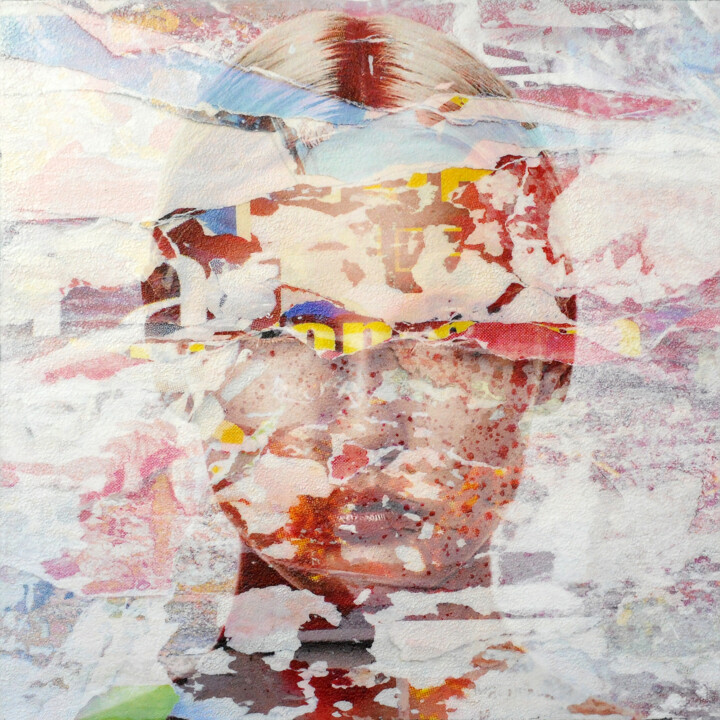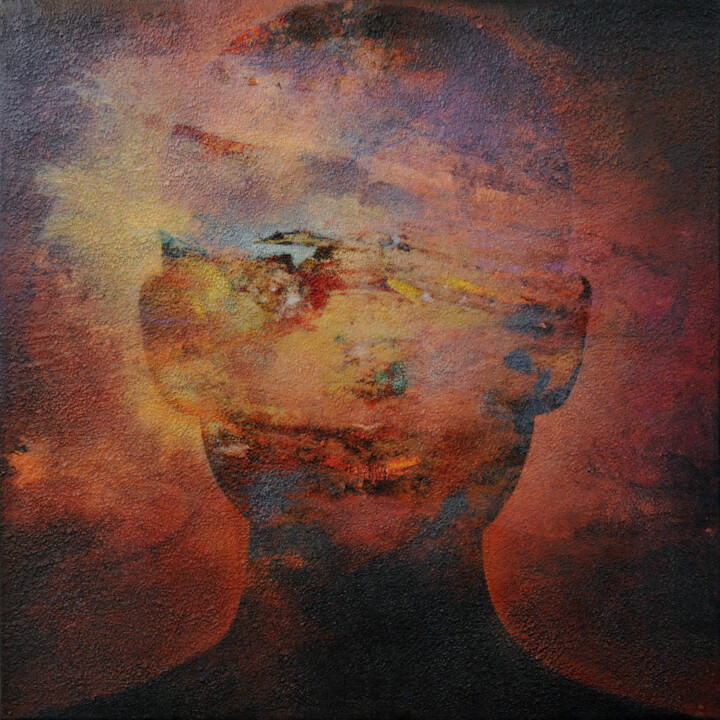Key Points
Unique technique : Fusion of digital and manual work (paint, gel, oil, chrome, etc.).
Portraits and abstractions : Recomposed faces or abstract works rich in textures.
Various supports : Canvas, paper, aluminum, with high-end finishes.
Strong and sensory aesthetics : Materials, light, reliefs.
Growing recognition : Present on the Dutch and European contemporary art scene.
In Rotterdam, in a light-filled studio, Karin Vermeer creates works that blur the lines between reality and the virtual, between photography, painting, and the imaginary. For more than two decades, this Dutch artist has transformed the female figure and abstract landscapes into sensory and visual playgrounds, using a technique as unique as it is masterful.
A recognizable artistic signature
 Electric Blue & Orange (2024), Karin Vermeer, Oil on linen, 100x100 cm
Electric Blue & Orange (2024), Karin Vermeer, Oil on linen, 100x100 cm
Trained at the Willem de Kooning Academy, Karin Vermeer began her career as an illustrator before turning to a more personal, bolder practice. Fascinated by fashion codes and representations of the female body, she subverts these standards to create composite portraits: faces that don't exist, created from a skillful blend of photographs. Each work is the result of a multi-stage process: an initial digital phase, where the images are merged, followed by an intense manual intervention, based on paint, gel, pastel, and thick textures.
The result? Portraits and abstract compositions imbued with raw poetry, marked by the superposition of layers, materials, and emotions. His creations don't just seduce the eye; they invite contemplation and tactile exploration.
A hybrid, profoundly contemporary approach
 Rusted orange and brown (2025), Karin Vermeer, Oil on linen canvas, 100x100 cm
Rusted orange and brown (2025), Karin Vermeer, Oil on linen canvas, 100x100 cm
What makes Vermeer's work so captivating is her ability to combine two seemingly opposing worlds: technological precision and the spontaneity of gesture. Works like Rusted Orange and Brown (2025) and Electric Blue & Orange (2024) illustrate this duality: from an elaborate digital montage, she creates a base that she then manually enriches, until she obtains a unique piece, vibrant with textures and reliefs.
His work on aluminum, such as the piece Blurred Magnolia (2025), takes this sensory exploration even further. The metal support reacts to light, while layers of golden chrome, earthy red, and satin varnish give the whole an almost sculptural presence.
An artist in constant evolution
 Blurred Magnolia (2025), Karin Vermeer, Oil on linen, 120x160 cm
Blurred Magnolia (2025), Karin Vermeer, Oil on linen, 120x160 cm
Although Karin Vermeer initially became known for her expressive limited-edition portraits, she is now expanding her exploration into abstraction and landscapes. Each work is the result of a long process: nothing is fixed, each creation is a field of experimentation. This ability to reinvent herself while maintaining aesthetic consistency makes Vermeer a key figure in the Dutch contemporary art scene.
A rising value to watch closely
Karin Vermeer is attracting growing interest in art circles across Europe and beyond. Her innovative approach, the richness of her materials, and the emotional depth of her works attract both discerning connoisseurs and discerning collectors. Owning a work by Vermeer means welcoming into your home a unique piece where time, material, and emotion meet. It also means following the career of an artist on the rise, whose each new work demonstrates an ever-increasing maturity.
FAQ – Karin Vermeer
What is Karin Vermeer's style?
She blends digital art and traditional painting to create powerfully textured portraits and abstractions.
What materials does she use?
She works with digital prints that she enhances with acrylic paint, oil, gel, chrome, and more.
Why do his works attract attention?
For their hybrid aesthetic, their manufacturing quality and their uniqueness at the crossroads of fashion, illustration and abstraction.
Where is it based?
In Rotterdam, the Netherlands, where she has lived and created since 2002.



 Nicolas Sarazin
Nicolas Sarazin












